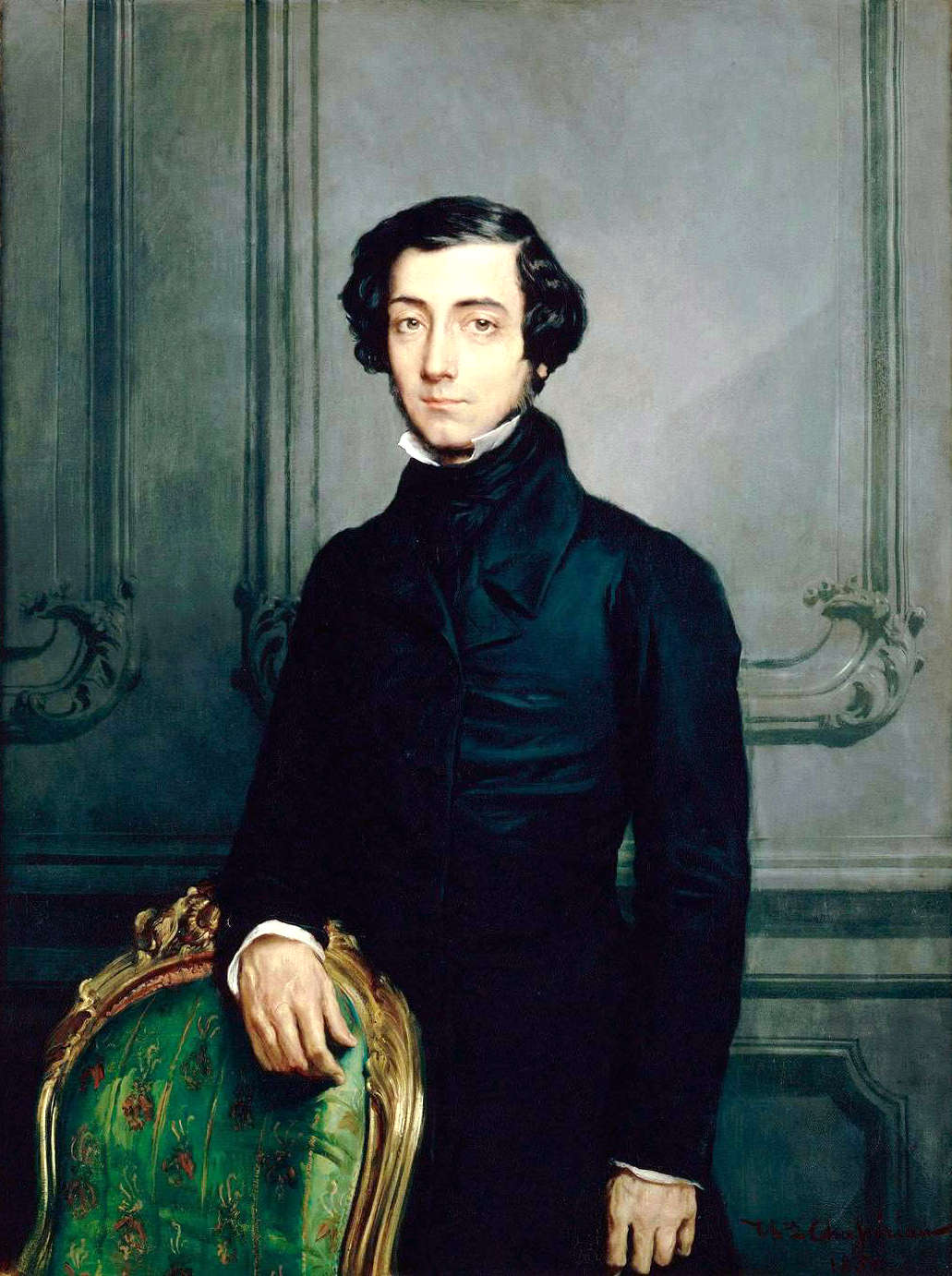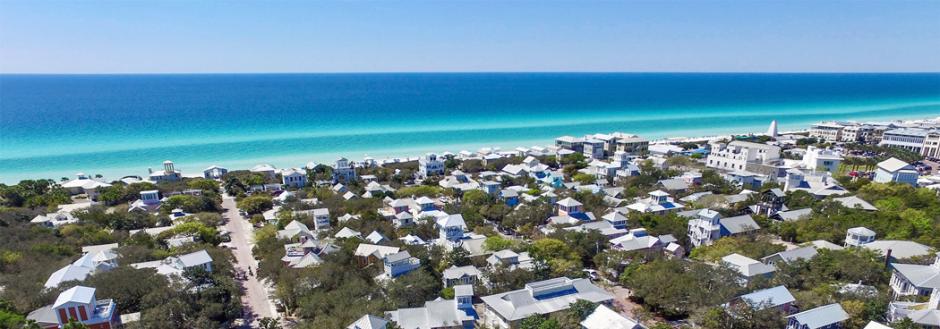| Sprawl benefits edge city governments, but not the metropolitan region... or the environment (Photo credit: Rich Reid, Fine Art America) |
Regional governance is important because one of the major obstacles that gets in the way of addressing almost any American policy problem you care to name is that our political arrangements do not match the reality of people's lives.
 |
| Source: Wikipedia |
Political arrangements reflected this way of life. In self-governing towns with self-contained economies, neighbors could decide the kind of community they wanted, and could use their resources to build that community. They had to live both within the limitations of their resources and with the consequences of what they decided.
I don't want to idealize early America. Even de Tocqueville admitted his descriptions applied to a relatively small part of the country, and even that part (the Northeast) excluded blacks, Native Americans and non-conformists from full membership in the community. Slavery was legal in much of the country, gays and the mentally ill were pariahs everywhere, and women's lives were extremely and rigidly circumscribed. Today's technology and global economy provides abundant material comfort that would make most of us reluctant to return to those bygone days.
Technology and globalization bring their own sets of problems, though, and we have been slow to respond to them. My argument here is that one way in which we have been slow to respond is in our political arrangements. The national government wields power in more areas than it used to, and in a global economy that's appropriate. Still, many political decisions are made at the state and municipal level at a time when most people in their daily or economic lives encounter those boundaries as artificial.
Peter Calthorpe and William Fulton noted 14 years ago that most of us live our lives in a region, [which is] a large and multifaceted metropolitan area encompassing hundreds of places that we would traditionally think of as distinct and separate "communities" [ch. 1]. Individuals cross municipal boundaries to work and shop; investors think in terms of the whole area's reputation, work force, &c.; people across political boundary lines are economically interdependent; and they share a cultural identity as well as a natural environment. Calthorpe and Fulton argue for regional design--"conceiving the region and its elements as a unit not separately"--in order to integrate its ecology, economy, history, politics, regulations, culture and social structure [ch. 3]. Only at the regional level can effective policies be made to address efficiently issues of growth, land use, transportation, housing, poverty, education and taxation [ch. 4]. This can be facilitated by leadership at the state level--to start with, national and state transportation policy need to stop incentivizing sprawl--but requires vision in the region itself [see examples of successes and failures in ch. 8].
Sprawl not only facilitates the political atomization of metropolitan regions, it is facilitated by it. Todd Litman and his colleagues at the London School of Economics note that while sprawl benefits the individuals who can afford it, it carries substantial costs, including land use displacement, per capita infrastructure requirements, travel time and distance, traffic fatalities, and physical inactivity and obesity. They list a number of market-based policy reforms cities can pursue in the way of smart growth: cities can improve and encourage more compact housing options, reduce or eliminate minimum parking requirements, reduce development and utility fees for compact infill development, charge efficient prices for using roads and parking facilities, apply multimodal transport planning, and correct tax policies that unintentionally favor sprawl and automobile travel. But cities can't do these things if they're thwarted by state or national governments, or if other political units in the metro region have incentives to continue sprawling.
Of course, moving decision-making to the metropolitan level doesn't guarantee the decisions will be made well, as witness Dave Alden's report of the regional rail authority in Petaluma choosing to site a commuter rail station in a spot with few prospects for much residential population. But metropolitan government does mean the considerations decision-makers use will be based on the scale of the whole region, not the efforts of some political atoms to get the advantage over others.
Cedar Rapids shares a metropolitan region with several smaller communities as well as unincorporated Linn County. It has an advantage which many larger central cities--Chicago and St. Louis, for example--do not, in that it commands the vaster part of both metro population and economic resources. There are a couple of regional intergovernmental organizations: the Linn County Board of Supervisors are elected from five districts with varying mixes of urban, suburban and rural precincts. The Corridor Metropolitan Planning Organization ("Corridor MPO") is a forum for discussing issues, particularly related to transportation, among appointed representatives of Cedar Rapids and five adjoining towns, the county, and key non-governmental organizations.
Neither really amounts to regional government, nor has either been notably successful at promoting regional-mindedness. Partly this is due to limited jurisdiction, but mostly it's due to revenue being handled at the municipality level. It may be in Cedar Rapids's interest to control sprawl--although if it were we wouldn't be all in on the Highway 100 extension, would we?--but controlling metropolitan growth clearly hurts the surrounding communities by robbing them of potential corporate and individual tax revenue. So Marion sprawls like the devil's on its tail, and Hiawatha and Cedar Rapids try to poach each other's businesses. A couple years ago, the MPO nearly broke up when Cedar Rapids fought with the smaller towns over funding for trails--the smaller towns wanted more money for roads--and then tried to spend trail funds to connect two sections of the downtown Skywalk.
Cedar Rapids can do a lot on its own, and its plans in Envision CR to move to complete streets and transect-based zoning will be hugely positive steps. But only a regional government could enact an urban growth boundary, no poaching, and revenue sharing such that Cedar Rapids's loss is not Hiawatha's gain. Until we get a handle on these issues as a metropolis, and stop playing games of beggar-thy-neighbor, critical issues will defy solution. As much as this true for Cedar Rapids, it's even more true for Chicago, Kansas City, Minneapolis-St. Paul, St. Louis, and other major metros.
FROM A DIFFERENT VANTAGE POINT
Jeff Wood, "Metro Areas--True Laboratories of Democracy," Talking Headways Podcast 62, Streetsblog USA, 4 June 2015, http://usa.streetsblog.org/2015/06/04/talking-headways-podcast-metro-areas-the-true-laboratories-of-democracy/ ...interview with Bruce Katz of the Brookings Institution, co-author (with Jennifer Bradley) of The Metropolitan Revolution: How Cities and Metros Are Fixing Our Broken Politics and Fragile Economy (Brookings Institution, 2014) on devolution of policy making in Britain from national to metropolitan government. Katz is mainly concerned about the national vs. local dimension of the level-of-government topic, and as such doesn't distinguish between cities and metropolitan areas.
SOURCES
Peter Calthorpe and William Fulton, The Regional City: Planning for the End of Sprawl (Island, 2001)
Envision CR [Cedar Rapids's master plan adopted 27 January 2015]
Todd Litman, "Urban Sprawl Costs the American Economy More Than $1 Trillion Annually," USAPP, London School of Economics and Political Science, 1 June 2015, http://blogs.lse.ac.uk/usappblog/2015/06/01/urban-sprawl-costs-the-american-economy-more-than-1-trillion-annually-smart-growth-policies-may-be-the-answer/?utm_source=feedburner&utm_medium=feed&utm_campaign=Feed%3A+Usapp+%28USAPP+-+American+Politics+and+Policy%29
EARLIER POSTS IN THIS SERIES
"Envisioning CR I: A 24-Hour Downtown," 1 March 2015
"Envision CR II: Including the Poor," 15 March 2015
"Envision CR III: Improve Public Transportation," 6 April 2015
"Envision CR IV: Neighborhood Stores," 28 May 2015













